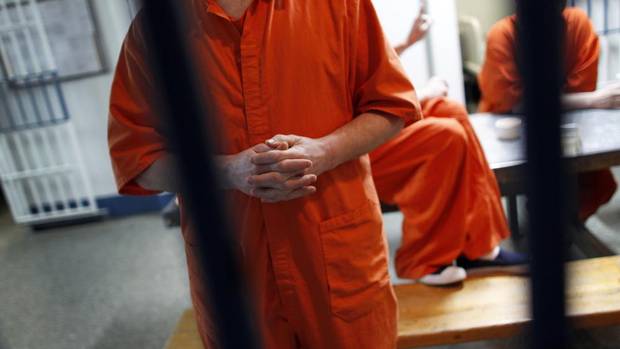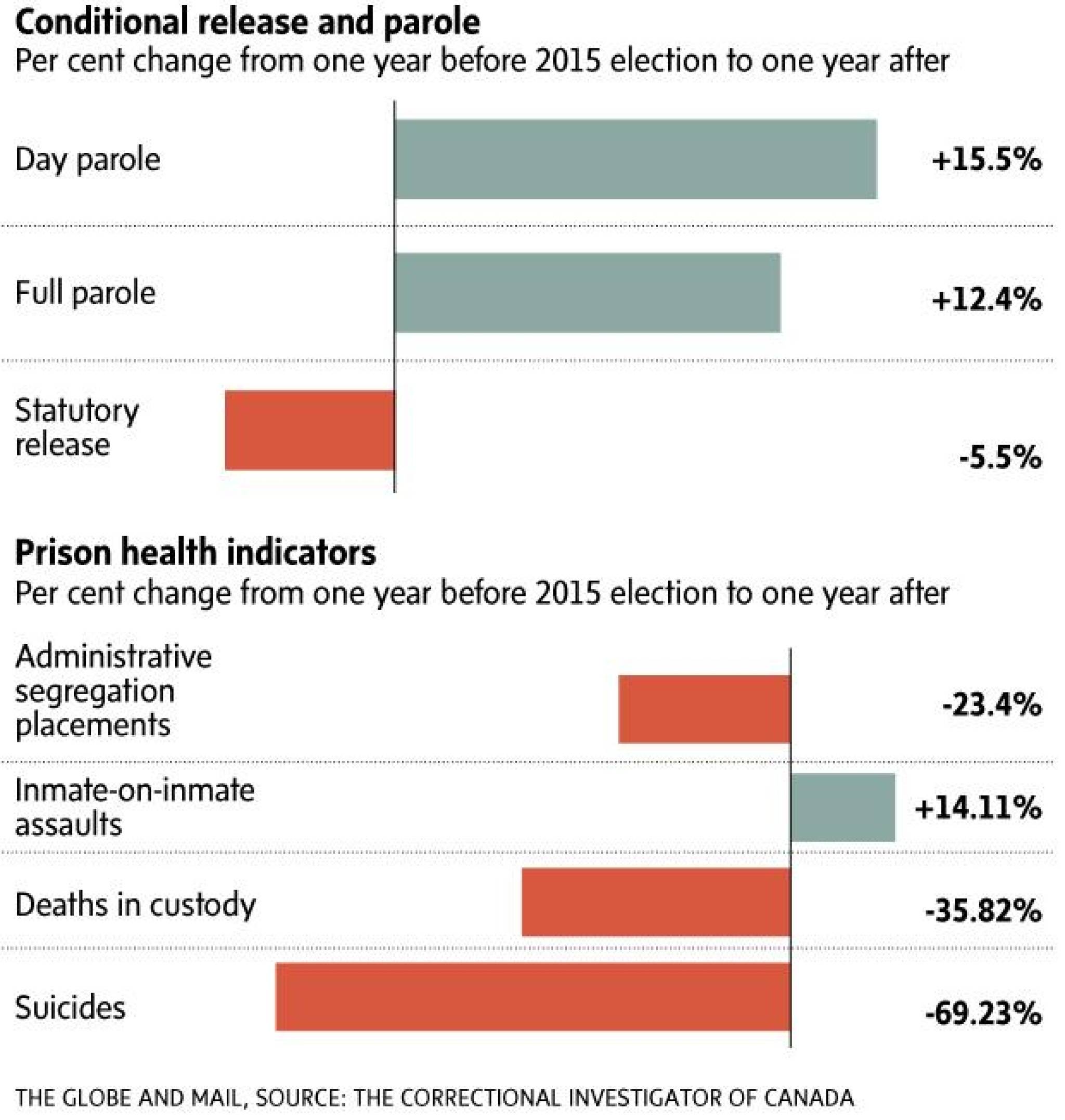In a single year under Liberal rule, federal prisons became less deadly, less crowded and less black, according to new data obtained by The Globe and Mail that suggests prison life has changed strikingly since the Harper Conservatives fell from power.
But the statistical turnaround also presents a public-policy head-scratcher. The government of Justin Trudeau came to office vowing to bring a rehabilitative focus back to corrections but has yet to take action.
“It’s quite impressive that, despite the fact there’s been no legislative changes, no regulatory changes, no injection of new money in corrections, the same commissioner, that we’ve seen a significant improvement in a number of performance indicators in health in prisons,” said federal correctional ombudsman Ivan Zinger.
Last year, Mr. Zinger published numbers that offered a bleak look at prison life during the decade under Stephen Harper. He found across-the-board spikes in a range of health indicators from the 2005-06 fiscal year to 2014-15: serious bodily injuries (up 113.5 per cent); attempted suicides (up 210 per cent); double-bunking (up 54.8 per cent); suicides (up 30 per cent); deaths in custody (up 36.7 per cent); and the number of inmates gassed (up 235.8 per cent).
The ranks of black inmates ballooned 71 per cent while aboriginal and female populations surged 44.8 per cent and 51.2 per cent, respectively.
When Mr. Zinger compiled numbers for the year immediately following Mr. Trudeau’s election, he discovered a startling turnaround. Virtually all of those 10-year trend lines had suddenly and inexplicably nose-dived.
Over the first 12 months of Liberal rule, suicides declined 69.2 per cent; attempted suicides 54.4 per cent; double-bunking 24 per cent; serious bodily injuries 12.6 per cent; and internal complaints 27.6 per cent.
Cases of correctional officers using force against inmates declined 6.1 per cent after soaring nearly 50 per during the Conservative era.
The proportion of black inmates, meanwhile, went down down 19.1 per cent. The number of aboriginal inmates still grew, however, by 2.1 per cent.
Parole underwent a dramatic reversal as well. A 27.6-per-cent dip in rates of full parole during the Harper regime turned into a 12.4-per-cent rise under Mr. Trudeau.
“It’s mostly great news,” said Mr. Zinger.
But there were setbacks among the numbers as well. Inmate-on-inmate assaults increased 14.1 and the use of chemical sprays to restrain inmates rose 6.75 per cent.
Several theories emerged to explain the shift. Glen Brown, a criminology instructor at Simon Fraser University and former warden with the Correctional Service, said that Canadian prison policies were trending in this direction for decades until the Harper government took over and introduced punitive policies accompanied by tighter budgets. The result was a 10-year disruption of longer historical trends. Mr. Trudeau represents a return to the mean.
“It’s likely that many working in and studying corrections would expect a return to a more progressive path under the current government,” he said in an e-mail while cautioning against drawing broad conclusions from narrow year-over-year comparisons.
The head of the union representing federal correctional workers suggested that a single indicator – a drop in prisoners sharing cells – could explain everything.
“I think most of those numbers have dropped because of double-bunking,” said Jason Godin. “It is not a good practice. There have been significant efforts by Corrections and by us in working to reduce double-bunking, and when that goes down, things get better for everyone.”
A spokeswoman for the Correctional Service offered no explanation, saying only the agency needed time to “independently verify these statistics before commenting.”
Mr. Zinger reasoned that the figures show how a government can shift practices based solely on tone. “You could say this is great for democracy,” he said. “It means the bureaucracy is following the will of elected officials. … You could also argue it makes the law seem to be quite discretionary. The political party of the day controls how much attention we pay to the law. That’s the more jaded way of looking at this.”
PATRICK WHITE
The Globe and Mail
Published Thursday, Mar. 16, 2017 9:52PM EDT
Last updated Friday, Mar. 17, 2017 6:11AM EDT


